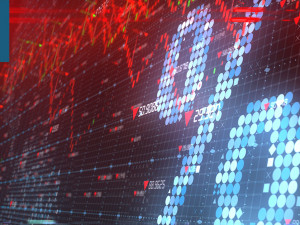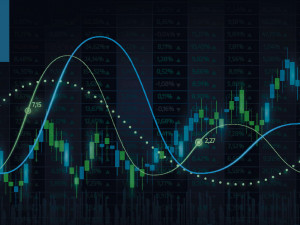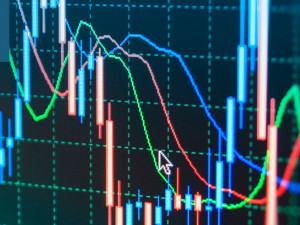
Bank warns of 10% inflation
Morning mid-market rates – The majors
18th March: Highlights
- Bank of England hits a treble
- Economy continues to perform well
- ECB unlikely to be able to avoid a recession
Ukraine conflict to hit growth
The committee voted by a majority of 8-1 in favour of the hike. The only dissenting voice was that of Sir Jon Cunliffe, the Bank’s deputy Governor for financial stability.
The focus of the Central bank has switched latterly to fighting inflation despite the threat that the conflict in Ukraine brings fears of a slowdown in economic activity.
In its latest economic forecasts published last month, the Bank predicted that inflation would peak at 7.25% next month. That expectation has already been changed, and a peak of 8% has become the core expectation.
However, despite the Bank’s view, market analysts are raining their expectations almost weekly and have now reached 10%.
Bank of England Governor, Andrew Bailey, blamed the increase in energy prices for the rise in inflation expectations. He went on to say that higher costs attributed to the conflict would also have an adverse effect on economic activity.
Market expectations for a fourth consecutive hike at the next MPC meeting are growing already as a negotiated settlement in Ukraine is still unlikely.
Three hikes at consecutive meetings has been a rarity for the Bank, with the last time it happened being in 197 in the first days of the MPC’s existence.
Inflation hit 5.6% in February and is expected to rise to 6% or even 6.5% this month. As added costs are added to household expenditure in April. The rate is expected to hit 7.25%. Any continued increase following that will be dependent upon the path of energy prices.
Another surge in inflation is expected in October when the energy price cap is reconsidered, but prices will be subject to uncertainty given the fluidity of the situation in Ukraine.
Global supply chains are not now expected to recover as rapidly as was expected following the Pandemic.
The pound initially reacted poorly to the news of the increase in rates but recovered later. It fell to a low of 1.3087 but recovered to close virtually unchanged on the day at 1.3048.
Considering your next transfer? Log in to compare live quotes today.
Economy performing well with one exception
There remains one outlier to that improvement, and that is the continued struggles being experienced by the automotive sector.
The well-documented global shortage of semiconductors for use in new vehicles continues to be an issue, but that has spread to other spare parts. This means that employment in this sector is lagging the rest of the economy as workers’ return to work is being delayed.
Output in the automotive sector has fallen by 30% so far this year and this is beginning to be a significant concern as the chip shortage is set to continue.
The increased price of energy will encourage more drilling in the Gulf of Mexico, and that will in turn stimulate that sector’s contribution to the economy.
Fed Chairman Jerome Powell is still concerned that the rate hikes alone will not be sufficient to bring inflation under control, with the fear that the headline will hit 10% next month. In fact, it may already be at that level.
Powell intimated that nothing is off the table as the effort to control prices begins in earnest.
The fight against inflation is becoming less transparent, and there are many unforeseen possibilities that could push it even higher than forecast.
Renowned Investment bank Goldman Sachs has issued a warning about recession in both the U.S. and Europe and has raised the spectre of stagflation. In fact, it believes that it is possible that a fall in activity while inflation rises could already be a factor.
Powell is using his intuition, which has proven to be faulty in the past, to predict that growth will remain strong for the rest of 2022. The data may not always back his judgement, and he has some ground to make up following his transitory faux pas when predicting the path for inflation in the second half of last year.
The dollar index fell again yesterday, for the third consecutive day. It reached a low of 97.72, closing at 98.02.
Pressure on the ECB continues to increase
While this was widely expected, it still piles pressure on the ECB to move more rapidly to control prices.
The conflict in Ukraine is influencing both growth and inflation, and for now ECB President Christine Lagarde is still more closely concerned about economic activity.
Inflation is historically treated with less concern for the eastern part of the Union, due to the almost constant shortages of the Soviet era being a source of major hikes in inflation.
In Germany and the other north-western countries like The Netherlands and Belgium, inflation is the number one public enemy.
While inflation remains at its highest level since 1999 when monetary union took place, the rate of growth appears to be slowing.
Last month inflation grew by just 0.1% from 5.8% to 5.9% and this will have provided Lagarde with a little breathing space despite calls for the Central Bank to act more quickly.
The ECB’s seemingly relaxed attitude to inflation runs contrary to events in both the UK and the U.S, where interest rates are rising. This will increase the level of divergence in monetary policy, adding to downwards pressure on the single currency.
Versus Sterling, the euro stays hemmed in by the proximity of the 1.20 level. It traded between 1.1950 and 1.1823, closing yesterday at 1.1854.
Against the dollar, it rose to a high of 1.1137 and closed at 1.1091.

About Alan Hill
Alan has been involved in the FX market for more than 25 years and brings a wealth of experience to his content. His knowledge has been gained while trading through some of the most volatile periods of recent history. His commentary relies on an understanding of past events and how they will affect future market performance.”



